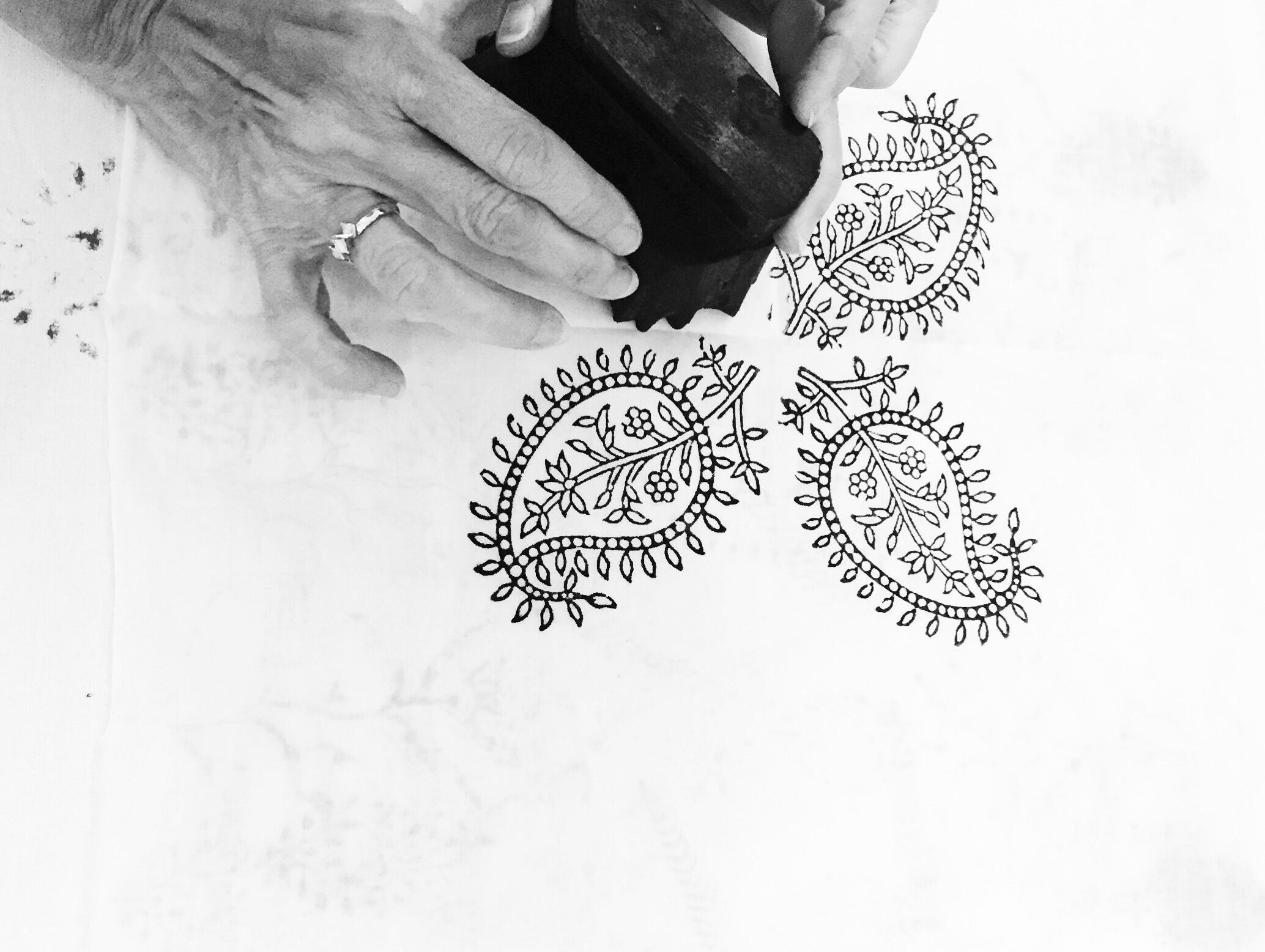Singapore is a vibrant and multicultural city that offers many opportunities to try new things. Living here has given me so many creative outlets, from photography and screen printing workshops to museum docent training.
As part of Kala Tarang‘s latest Crafts Bazaar, Santosh Kumar Dhanopia held an intro to traditional hand block printing workshop.




Traditional Hand Blocking
Rajasthan and Gujurat are today’s centres for textile block printing in India. While we come to associate these beautiful textile prints with this country, its origin lies in China. India’s secret is the incredible plant dyes and fixatives that have created beautiful palettes of colours and the evolution of this art form over generations. As early as the 12th century, certain regions were already known for their printed cotton, leading them to be significant exporters of handprinted textiles. The art of hand blocking spread throughout Southeast Asia.
The Printing Process
The meticulous craft of traditional hand block printing begins with a design. The artisan sketches it on a piece of paper, which he places over a block of wood, usually Indian Rosewood. He then carves out the design, a process that can take up to two weeks. There is the outline block, the most expensive one and carved by the most skillful, and the colour block. A separate block is created for each design element and for each colour, an incredible process. It’s not surprising then that people collect them, as they in of themselves are a piece of art.
Before printing, the fabric is prepared by soaking for a day or two to remove the fibre’s starchiness. The fabric is then beaten on a stone used for this to further soften it. The last step is to dry it in the sun, which bleaches the fabric to better take on the ink. In larger operations, they bleach the fabric in a solution before roller machinery squeezes the liquid out.
So far, I have not mentioned the creation, testing, and mixing of dyes by the colour master. Or the maintenance of the blocks to prevent warping.
The artisan lays down one layer of the design, allowing it to dry before adding another element. The design comes alive with one colour at a time. Once ready, they place the fabric in a large stone-walled vat to wash it in mineral water in order to stabilize the dyes. Even with the same design, the natural drying creates variation due to the varying intensity of the sun. This aspect, along with slight inconsistency of block placements, adds charm in its imperfection and the evidence of the human touch.
The Block Printing Workshop
For the workshop, Santosh brought a selection of blocks. We used some of these on the fabric provided to try it out. It is clear that this art requires a patient and steady hand to lay down the right amount of ink and place the block accurately to create a pattern. The traditional block printer does this with a trained eye, with some help of registration points on the blocks for alignment.
It was a casual and fun workshop, creating pieces with the red and black paints. I printed a scarf with a simple design and gave it to my mom as a gift. Attending this workshop with Santosh deepened my appreciation for printed textiles.
